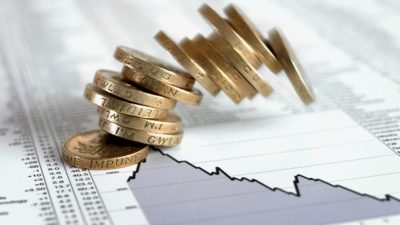Regularly investing in top-notch stocks using a Self-Invested Personal Pension (SIPP) is an efficient way to build retirement wealth. After all, the tax advantages of this special account boosts the amount of available capital, thanks to tax relief.
They also protect investment returns from capital gains and dividend taxes as well. However, how much money could investors have made over the last decade with £10k? Let’s find out.
Investment returns in a SIPP
Calculating the gains investors could have reaped over the last decade ultimately depends on what they chose to invest in. Most typically opt for a hands-free approach with index tracker funds. So how have the UK’s leading indexes performed since 2014?
Should you invest £1,000 in Clarkson Plc right now?
When investing expert Mark Rogers has a stock tip, it can pay to listen. After all, the flagship Motley Fool Share Advisor newsletter he has run for nearly a decade has provided thousands of paying members with top stock recommendations from the UK and US markets. And right now, Mark thinks there are 6 standout stocks that investors should consider buying. Want to see if Clarkson Plc made the list?
| Index | FTSE 100 | FTSE 250 | FTSE SmallCap | FTSE All-Share |
| Total Return | 67.9% | 61.2% | 94.4% | 68.2% |
| Annualised Total Return | 5.3% | 4.9% | 6.9% | 5.3% |
Despite their popularity, it seems the FTSE 100 and FTSE 250 haven’t actually been the stars of the show over the last decade. While their long-term average returns have sat closer to 8% and 11% respectively, these leading indexes have lagged significantly. And it’s actually the FTSE Small-Cap index that’s been leading the charge. But what do these figures mean in terms of money?
Assuming the investor is in the basic income tax bracket, that means they’re eligible for 20% tax relief inside their SIPP. Therefore, despite having £10,000 at hand, the added bonus from relief actually immediately increases this capital to £12,500. So how much would £12,500 be worth today if it had been invested in each of these indexes?
| Index | FTSE 100 | FTSE 250 | FTSE SmallCap | FTSE All-Share |
| Portfolio Value | £20,990 | £20,145 | £24,299 | £21,031 |
The numbers show that regardless of which index investors chose, each would have at least doubled their money. But what if they had continued to top up their SIPP each month with £500? That’s where things get far more interesting.
| Index | FTSE 100 | FTSE 250 | FTSE SmallCap | FTSE All-Share |
| Portfolio Value | £119,985 | £116,846 | £132,206 | £120,134 |
Please note that tax treatment depends on the individual circumstances of each client and may be subject to change in future. The content in this article is provided for information purposes only. It is not intended to be, neither does it constitute, any form of tax advice. Readers are responsible for carrying out their own due diligence and for obtaining professional advice before making any investment decisions.
Maximising returns
Index investing isn’t the only strategy out there. And for those who are comfortable with the added risks of stock picking, far more lucrative returns could have been earned over this period. That’s certainly true for investors who bought and held shares of Diploma (LSE:DPLM).
The firm’s a value-add distributor supplying critical components to the aerospace, defence, energy, and biotech industries, as well as providing additional support services. Over the years, it’s managed to make itself a critical part of its customers’ value chain, resulting in tremendous pricing power.
That’s clearly been reflected in its share price since the stock’s up 580% since 2014! That’s an average annualised return of 21.1% – three times more than what even the FTSE SmallCap index achieved. And in terms of money, £10,000 invested in a SIPP with £500 monthly top-ups would now be worth approximately £353,542.
This goes to show the potential market-beating gains stock picking can provide. But, of course, it wasn’t a perfectly smooth journey, with multiple double-digit drops along the way. And even today, the firm continues to face threats from supply chain disruptions to rising competition.
Nevertheless, if I was looking to invest fresh capital into my SIPP today, my strategy would be focused on finding the next Diploma-like stock, despite the added risk.








